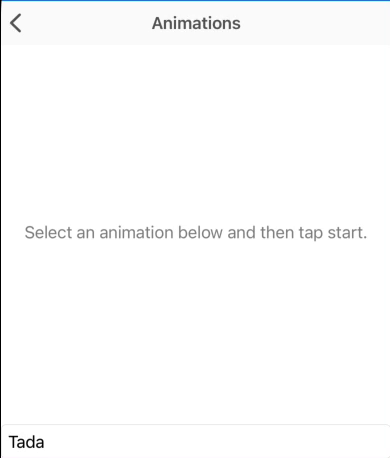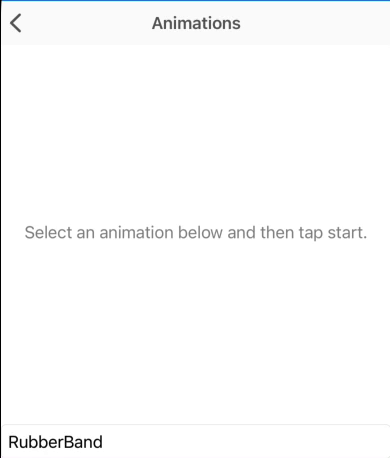Animations in Xamarin.Forms
by Shaun Lawrence
During our time building a mobile game with Xamarin.Forms we discovered just how powerful the Animation class in Xamarin.Forms really is!
We wanted to see how far we could push the framework so we made a plan see if we could bring in some fancy CSS animations from Animate.css. Here is just a small set of examples using the Animation framework in Xamarin.Forms:
Tada
This worked really well to show a user that they have guess something correctly.

public Animation CreateTadaAnimation(View view)
{
const double maximumScale = 1.1;
const double minimumScale = 1.1;
const double rotationAngle = 3.0;
var animation = new Animation();
animation.Add(0, 0.1, new Animation(v => view.Scale = v, 1, minimumScale));
animation.Add(0.2, 0.3, new Animation(v => view.Scale = v, minimumScale, maximumScale));
animation.Add(0.9, 1.0, new Animation(v => view.Scale = v, maximumScale, 1));
animation.Add(0, 0.2, new Animation(v => view.Rotation = v, 0, -rotationAngle));
animation.Add(0.2, 0.3, new Animation(v => view.Rotation = v, -rotationAngle, rotationAngle));
animation.Add(0.3, 0.4, new Animation(v => view.Rotation = v, rotationAngle, -rotationAngle));
animation.Add(0.4, 0.5, new Animation(v => view.Rotation = v, -rotationAngle, rotationAngle));
animation.Add(0.5, 0.6, new Animation(v => view.Rotation = v, rotationAngle, -rotationAngle));
animation.Add(0.6, 0.7, new Animation(v => view.Rotation = v, -rotationAngle, rotationAngle));
animation.Add(0.7, 0.8, new Animation(v => view.Rotation = v, rotationAngle, -rotationAngle));
animation.Add(0.8, 0.9, new Animation(v => view.Rotation = v, -rotationAngle, rotationAngle));
animation.Add(0.9, 1.0, new Animation(v => view.Rotation = v, rotationAngle, 0));
return animation;
}
RubberBand
We haven’t actually used this inside our app but I just really like it!

public Animation CreateRubberBandAnimation(View view)
{
var animation = new Animation();
animation.Add(0, 0.3, new Animation(v => view.ScaleX = v, 1, 1.25));
animation.Add(0, 0.3, new Animation(v => view.ScaleY = v, 1, 0.75));
animation.Add(0.3, 0.4, new Animation(v => view.ScaleX = v, 1.25, 0.75));
animation.Add(0.3, 0.4, new Animation(v => view.ScaleY = v, 0.75, 1.25));
animation.Add(0.4, 0.5, new Animation(v => view.ScaleX = v, 0.75, 1.15));
animation.Add(0.4, 0.5, new Animation(v => view.ScaleY = v, 1.25, 0.85));
animation.Add(0.5, 0.65, new Animation(v => view.ScaleX = v, 1.15, 0.95));
animation.Add(0.5, 0.65, new Animation(v => view.ScaleY = v, 0.85, 1.05));
animation.Add(0.65, 0.75, new Animation(v => view.ScaleX = v, 0.95, 1.05));
animation.Add(0.65, 0.75, new Animation(v => view.ScaleY = v, 1.05, 0.95));
animation.Add(0.75, 1, new Animation(v => view.ScaleX = v, 1.05, 1));
animation.Add(0.75, 1, new Animation(v => view.ScaleY = v, 0.95, 1));
return animation;
}
You say you want more?
You should definitely watch this space as we are currently in the process of adding in a whole chunk of fancy animations to the already wonderful Xamarin Community Toolkit and more specifically under this feature.
tags: C# - dotnet - xamarin - xamarin.forms